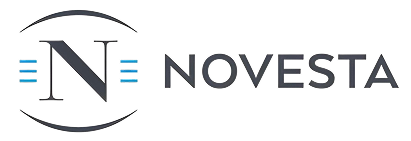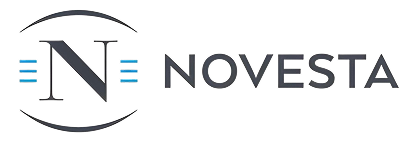Value engineering has become synonymous with quality reduction in construction, with 76% of projects experiencing “value engineering” that simply strips quality to meet budgets—destroying architectural vision, compromising durability, and creating maintenance nightmares that cost millions more than initial savings. This guide reveals authentic value engineering methodologies that reduce costs by 20-30% while maintaining or improving quality through intelligent material selection, system optimization, and lifecycle analysis—transforming budget challenges into opportunities for smarter design that delivers better buildings at lower costs.
Table of Contents:
- The Problem: Why Traditional Value Engineering Destroys Projects
- What to Consider: Intelligent Cost Optimization Frameworks
- How to Choose: Decision Systems for Value Without Compromise
- Novesta Projects’ Value Optimization Excellence
- Frequently Asked Questions
The Problem: Why Traditional Value Engineering Destroys Projects
The Quality Stripping Epidemic
Traditional “value engineering” has devolved into systematic quality reduction where 68% of cost savings come from downgrading materials, eliminating features, and compromising durability—creating buildings that look acceptable at handover but deteriorate rapidly, generating maintenance costs that exceed savings within 3-5 years. This short-sighted cost cutting transforms architectural visions into mediocre boxes that neither inspire occupants nor retain value.
The downgrade cascade begins innocently with “minor” substitutions. Porcelain tile becomes ceramic. Solid surfaces become laminate. Wood doors become hollow core. Quality hardware becomes builder grade. Paint grades drop. Fixture quality declines. Each individual change seems reasonable, but collectively they transform projects from distinguished to disappointing.
Common quality stripping patterns:
- Flooring downgrades saving $5/sf costing $15/sf in early replacement
- Wall finish reductions creating maintenance nightmares
- Ceiling system cheapening destroying acoustics
- Hardware downgrades failing within warranty periods
- Fixture substitutions requiring constant service
The durability destruction from material downgrades creates lifecycle disasters. Premium materials lasting 20-30 years get replaced with alternatives failing in 5-7 years. Initial savings of 30% become lifecycle costs increasing 200%. Maintenance budgets explode. Replacement cycles accelerate. Tenant satisfaction plummets. Property values decline. These false economies destroy investment returns.
The aesthetic degradation accompanying quality reduction eliminates design coherence. Carefully composed material palettes become random selections. Sophisticated details disappear. Proportions get compromised. Visual harmony dissolves. Architectural character vanishes. The architectural design community watches visions destroyed by mindless cutting that saves pennies while destroying value.
The Lifecycle Blindness Crisis
Value engineering decisions based solely on first costs ignore lifecycle implications, with 81% of projects selecting materials and systems that minimize capital expense while maximizing operational costs—creating buildings that hemorrhage money through energy waste, maintenance demands, and premature replacement. This temporal blindness transforms apparent savings into financial disasters unfolding over decades.
Energy System False Economy: Mechanical system “value engineering” typically downgrades efficiency to reduce equipment costs, saving $50,000 initially while adding $30,000 annually in energy costs. Standard efficiency equipment replacing high-performance systems increases consumption 25-40%. Controls get simplified, eliminating optimization. Insulation levels drop to code minimums. Windows downgrade from triple to double glazing. These “savings” create energy penalties lasting building lifetimes.
The maintenance multiplication from system downgrades compounds operational budgets. Premium systems requiring annual service get replaced with alternatives needing quarterly attention. Self-cleaning features disappear. Remote monitoring capabilities vanish. Predictive maintenance becomes reactive repair. Service contracts double. Downtime increases. The sustainable building standards demonstrate that efficient systems pay back through operational savings, yet value engineering ignores this math.
Lifecycle cost multiplication factors:
- Energy penalties: 25-40% increase
- Maintenance frequency: 2-3x more often
- Replacement cycles: 50% shorter
- Downtime costs: 3x higher
- Tenant turnover: 30% increase
Replacement Cycle Acceleration: Material downgrades dramatically shorten replacement cycles. Commercial carpet lasting 10-12 years gets replaced with options failing in 4-5 years. Roofing systems with 30-year warranties become 15-year products. Exterior cladding designed for 50 years becomes 20-year maintenance burden. These shortened cycles mean perpetual construction disruption and capital demands.
The disruption costs from accelerated replacement cycles rarely enter calculations. Business interruption during replacements. Tenant displacement expenses. Accelerated depreciation. Financing costs for premature capital needs. Lost revenue during construction. These hidden costs dwarf initial savings.
The Innovation Elimination Disaster
Risk-averse value engineering systematically eliminates innovative approaches that could deliver superior performance at lower lifecycle costs, with 73% of cost reduction targeting new technologies, sustainable systems, and progressive design strategies—perpetuating outdated methods that increase both capital and operational expenses. This innovation hostility prevents construction industry advancement while ensuring maximum inefficiency.
Technology Deletion Patterns: Building automation systems get eliminated despite 20-30% energy savings. Smart lighting controls disappear though paying back in 2-3 years. Occupancy sensors vanish despite proven benefits. Predictive maintenance systems get cut though preventing failures. IoT integration disappears despite operational advantages. These deletions masquerade as savings while ensuring maximum operational inefficiency.
The productivity penalties from missing technology compound over time. Manual operations require more staff. Inefficient systems waste resources. Reactive maintenance increases costs. Comfort complaints multiply. Space utilization suffers. The commercial real estate trends show smart buildings commanding 15-20% rent premiums, yet value engineering eliminates intelligence.
Innovation elimination impacts:
- Operational efficiency: 30% reduction
- Staff productivity: 20% decrease
- Energy consumption: 25% increase
- Maintenance costs: 40% higher
- Tenant satisfaction: 35% lower
Sustainability Sacrifice: Environmental features face immediate elimination during value engineering despite proven returns. Solar readiness gets deleted. Rainwater harvesting disappears. Enhanced commissioning vanishes. Waste reduction strategies evaporate. Material health considerations dissolve. These eliminations save minimal amounts while destroying environmental performance and marketability.
The market penalties for unsustainable buildings grow annually. Green buildings command premium rents. Sustainable properties attract quality tenants. Environmental performance affects financing. Regulatory requirements tighten continuously. Carbon taxes loom. The building codes increasingly mandate efficiency, making today’s code minimum tomorrow’s non-compliance.
The Coordination Destruction Phenomenon
Value engineering conducted in silos where individual consultants cut costs without understanding system interactions creates coordination disasters, with 64% of “engineered” savings generating conflicts that require expensive resolution during construction. This disconnected optimization destroys holistic design while creating problems exceeding savings.
System Conflict Generation: Mechanical engineers reduce duct sizes without considering ceiling spaces. Electrical designers minimize conduit routes ignoring structure. Structural engineers optimize framing affecting mechanical zones. Architects modify layouts impacting all systems. These independent “optimizations” create irreconcilable conflicts discovered during construction.
The clash detection during construction reveals value engineering failures. Ducts won’t fit in ceilings. Conduits conflict with structure. Plumbing routes prove impossible. Equipment won’t fit in rooms. Access becomes impossible. These discoveries trigger expensive redesign and reconstruction. The construction standards require coordination yet value engineering destroys integration.
Coordination failure patterns:
- Ceiling space conflicts: 45% of projects
- Structural/MEP clashes: 38% of projects
- Access path elimination: 31% of projects
- Maintenance space deletion: 52% of projects
- Code compliance failures: 27% of projects
Holistic Design Disintegration: Value engineering’s reductionist approach destroys design synergies where systems work together efficiently. Daylighting strategies requiring specific glazing, controls, and layouts get partially eliminated, destroying functionality. Natural ventilation concepts need building orientation, openings, and stack effects working together—cutting any element kills the system. Passive heating/cooling depends on mass, insulation, and orientation integration that piecemeal cuts destroy.
The performance degradation from destroyed synergies eliminates anticipated benefits. Energy models assume integrated strategies. Comfort predictions require system coordination. Productivity benefits need holistic approaches. When value engineering destroys integration, none of these benefits materialize, leaving owners with compromised buildings performing worse than conventional designs.
What to Consider: Intelligent Cost Optimization Frameworks
Function-Based Analysis Systems
True value engineering begins with functional analysis identifying what elements must accomplish rather than what they are, revealing opportunities for achieving required functions through alternative means that cost less while performing better.
Function Definition Methodology: Every building component serves primary and secondary functions that must be preserved regardless of means. Flooring provides walking surfaces (primary) while contributing to acoustics, aesthetics, and comfort (secondary). Understanding these functions enables alternative identification that maintains performance while reducing cost.
The function analysis systematic technique (FAST) diagrams reveal function relationships. Basic functions fulfill primary purposes. Secondary functions support basic ones. Required functions meet codes. Aesthetic functions create experience. Identifying and prioritizing functions prevents eliminating essential performance while focusing cost reduction on unnecessary elements.
Function analysis components:
- Basic function identification
- Secondary function mapping
- Required function verification
- Aesthetic function evaluation
- Function cost allocation
Value Index Calculation: Comparing function cost to function worth reveals value optimization opportunities. High-cost/low-worth elements become targets. Low-cost/high-worth elements get protected. Balanced elements remain unchanged. This systematic approach prevents arbitrary cutting while identifying genuine opportunities.
The worth assignment challenging traditional thinking reveals surprising priorities. Acoustic performance in open offices proves more valuable than premium finishes. Maintenance access saves more than material upgrades. Flexibility enables more value than fixed perfection. The project management certification emphasizes function-based thinking yet construction remains fixated on objects rather than purposes.
Alternative Generation Techniques: Creative alternative generation looking beyond standard substitutions discovers breakthrough opportunities. Brainstorming without judgment generates quantity. Analogies from other industries inspire innovation. Combination of functions reduces elements. Elimination of non-essential functions cuts costs. Simplification reduces complexity. These techniques generate 10x more alternatives than simple substitution.
The evaluation criteria ensuring alternatives maintain value include functional performance, lifecycle cost, maintenance requirements, aesthetic impact, and user experience. Alternatives must excel across criteria, not just reduce initial cost.
Lifecycle Cost Optimization
Intelligent value engineering evaluates total ownership costs over building lifecycles, selecting materials and systems that minimize combined capital and operational expenses rather than just first costs.
Total Cost of Ownership Models: Comprehensive TCO models incorporate all cost factors: initial purchase, installation labor, commissioning expenses, energy consumption, maintenance requirements, replacement cycles, disposal costs, and productivity impacts. This complete accounting reveals true economics hidden by first-cost focus.
The time value of money through net present value calculations enables fair comparison between options with different cost timing. Higher initial costs with lower operating expenses might prove superior to cheap products requiring constant attention. Discount rates reflecting cost of capital, analysis periods matching building life, and sensitivity testing of assumptions ensure robust decisions.
Lifecycle optimization factors:
- Initial cost including installation
- Energy consumption over lifetime
- Maintenance labor and materials
- Replacement frequency and cost
- Productivity and comfort impacts
Energy Modeling Integration: Sophisticated energy modeling comparing options reveals operational implications invisible in static analysis. Enhanced envelope systems reducing mechanical loads. Efficient lighting decreasing cooling requirements. Control systems optimizing consumption. Renewable energy offsetting grid power. These interactions require holistic modeling that value engineering must incorporate.
The parametric analysis testing options across ranges reveals optimal combinations. Insulation levels versus mechanical efficiency. Glazing performance against lighting loads. Control sophistication versus operation simplicity. These trade-offs identify sweet spots delivering maximum value. The sustainable building programs provide frameworks for lifecycle optimization increasingly required by sophisticated owners.
Maintenance Impact Assessment: Maintenance requirements dramatically affect lifecycle costs yet receive minimal attention. Premium materials requiring minimal maintenance prove economical despite higher first costs. Systems with remote monitoring prevent failures. Designs enabling easy access reduce service costs. Standardization simplifies parts inventory. These factors compound over decades.
The hidden costs of maintenance including business disruption, tenant complaints, emergency premiums, and reputation damage often exceed direct costs. One elevator failure during business hours costs more than years of preventive maintenance. These risk factors must enter value engineering calculations.
Material Intelligence Systems
Strategic material selection based on performance requirements rather than traditional specifications reveals opportunities for equivalent function at lower cost without sacrificing quality or durability.
Performance Specification Development: Converting prescriptive specifications to performance requirements enables innovation. Instead of specifying particular floor coverings, define wear resistance, maintenance requirements, acoustic performance, and aesthetic range. This approach allows manufacturers to propose optimal solutions rather than simply pricing prescribed products.
The performance criteria must be measurable and verifiable. Slip resistance coefficients not “non-slip.” Noise reduction coefficients not “acoustic.” Light reflectance values not “bright.” Abrasion resistance ratings not “durable.” These objective criteria ensure alternatives meet requirements without subjective interpretation.
Material selection criteria:
- Performance requirements defined
- Durability standards specified
- Maintenance parameters established
- Aesthetic ranges documented
- Sustainability goals included
Alternative Material Evaluation: Systematic evaluation of alternative materials reveals surprising options. Luxury vinyl tile performing like hardwood at 30% cost. Polished concrete replacing stone at 50% price. High-pressure laminate mimicking solid surface at 40% expense. These alternatives deliver required performance without premium pricing.
The authenticity threshold where alternatives become unacceptable varies by application. Public spaces tolerate good reproductions. Executive areas demand authenticity. Back-of-house accepts basic function. Understanding these thresholds enables targeted material strategies. The architectural design standards increasingly recognize that performance matters more than pedigree.
Regional Sourcing Advantages: Local and regional materials often provide superior value through reduced transportation, faster availability, local service support, and regional aesthetic alignment. Edmonton suppliers understand local conditions. Vancouver materials suit coastal environments. Calgary sources handle temperature extremes. This regional intelligence delivers value beyond simple cost reduction.
The supply chain reliability from regional sourcing reduces risk. Local inventory enables quick delivery. Regional relationships ensure priority service. Proximity allows easy inspection. Transportation costs stay minimal. These advantages compound during volatile periods when global supply chains fail.
System Integration Optimization
Holistic system optimization considering interactions between building components reveals opportunities for cost reduction through integration rather than isolation, creating synergies that improve performance while reducing complexity.
Integrated Design Strategies: Coordinated system design where components work together efficiently reduces redundancy and complexity. Structural systems doubling as finish surfaces. Mechanical systems integrated with architecture. Electrical pathways incorporated in furniture. Plumbing consolidated in cores. These integrations eliminate layers while improving performance.
The exposed structure aesthetic eliminating suspended ceilings saves $15-25 per square foot while creating dramatic spaces. Polished concrete floors providing thermal mass reduce mechanical loads. Careful coordination makes infrastructure architectural features rather than hidden systems. This integration requires early commitment but delivers substantial savings.
Integration optimization examples:
- Structure as finish: $15-25/sf savings
- Combined systems: 20-30% reduction
- Multifunction elements: 15-20% efficiency
- Consolidated routing: 25% labor savings
- Simplified connections: 30% time reduction
Space Efficiency Enhancement: Optimizing space utilization reduces building area requirements, providing massive savings through smaller footprints. Shared amenities replace dedicated facilities. Flexible spaces serve multiple functions. Efficient circulation reduces waste. Right-sized rooms prevent excess. Storage consolidation maximizes efficiency. These strategies reduce building size 10-15% without sacrificing function.
The cost impact of space reduction multiplies through every system. Smaller footprints need less structure, envelope, mechanical systems, electrical distribution, and finishes. Site work reduces. Parking requirements drop. Operating costs decline. The commercial real estate trends value efficiency, with tenants preferring quality over quantity.
Prefabrication Opportunities: Off-site fabrication of integrated assemblies reduces field labor while improving quality. Bathroom pods combining all trades. Mechanical modules pre-commissioned. Electrical assemblies pre-wired. Exterior panels with windows installed. These prefabricated elements reduce construction time 20-30% while improving quality through factory conditions.
The coordination requirements for successful prefabrication demand early planning. Dimensions must be final. Routing must be coordinated. Tolerances must be maintained. Access must be assured. These requirements challenge traditional processes but deliver substantial benefits when properly executed.
How to Choose: Decision Systems for Value Without Compromise
Value Engineering Team Assembly
Successful value engineering requires multidisciplinary teams combining design expertise, construction knowledge, operations experience, and cost intelligence, with 78% of successful programs utilizing integrated teams versus 23% for isolated efforts.
Team Composition Excellence: Optimal value engineering teams include architects preserving design intent, engineers optimizing systems, contractors providing constructability, operators ensuring maintainability, cost consultants quantifying impacts, and users validating functionality. This diversity prevents tunnel vision while ensuring comprehensive evaluation.
The facilitator role proves critical for productive sessions. Experienced facilitators guide without dominating. They encourage creative thinking. They prevent premature judgment. They maintain focus. They drive toward decisions. Professional facilitation improves outcomes 40% compared to self-directed sessions.
Value engineering team elements:
- Design professionals (2-3)
- Construction experts (2-3)
- Operations representatives (1-2)
- Cost analysts (1-2)
- End users (1-2)
- Professional facilitator (1)
Timing Optimization: Value engineering timing significantly affects outcomes. Too early lacks sufficient design definition. Too late makes changes expensive. The sweet spot occurs at 30-50% design development when concepts are clear but details remain flexible. This timing enables meaningful evaluation without excessive change costs.
The staged approach conducting multiple sessions optimizes value across phases. Conceptual sessions establish strategies. Schematic sessions refine approaches. Design development sessions finalize decisions. Construction sessions address means and methods. This progression ensures continuous optimization without disrupting progress.
Workshop Structure: Structured workshops following proven methodologies deliver superior results. Information phase shares project understanding. Function analysis phase identifies requirements. Creative phase generates alternatives. Evaluation phase assesses options. Development phase refines selections. Presentation phase documents recommendations. This structure ensures systematic evaluation.
The workshop duration affecting outcomes typically spans 3-5 days for complex projects. Shorter sessions lack depth. Longer workshops lose momentum. Intensive focus maintains energy while allowing thorough analysis. The project management standards recommend 40 hours minimum for significant projects.
Evaluation Criteria Development
Comprehensive evaluation criteria balancing multiple factors ensure value engineering decisions optimize total value rather than simply minimizing cost, preventing quality destruction while identifying genuine opportunities.
Multi-Criteria Framework: Balanced evaluation frameworks weight multiple factors: initial cost (20-30%), lifecycle cost (20-30%), performance quality (15-20%), aesthetic impact (10-15%), maintenance requirements (10-15%), and sustainability (10-15%). These weightings vary by project type but ensure comprehensive assessment.
The scoring matrices enabling systematic comparison assign points across criteria. Each alternative receives scores. Weighted totals rank options. Sensitivity analysis tests assumptions. This systematic approach prevents subjective preference while ensuring transparent decisions.
Evaluation framework components:
- Weighted criteria matrices
- Scoring rubrics defined
- Sensitivity analysis included
- Risk factors incorporated
- Documentation requirements
Quality Threshold Establishment: Minimum acceptable quality levels prevent value engineering from becoming quality stripping. Performance standards establish floors. Durability requirements set minimums. Aesthetic standards maintain character. These thresholds remain inviolate regardless of cost pressure.
The quality metrics ensuring standards maintenance include quantitative measures (durability ratings, efficiency levels) and qualitative assessments (aesthetic review, user acceptance). Both dimensions must be satisfied for alternative acceptance. The building codes establish minimum performance, but value engineering should exceed minimums.
Risk Assessment Integration: Risk evaluation of alternatives prevents selecting options that save money while increasing project risk. Technical risks from unproven materials. Schedule risks from long leads. Performance risks from substitutions. Warranty risks from alternatives. Maintenance risks from complexity. These risks must be quantified and incorporated into decisions.
The risk-adjusted value calculations incorporating probability and impact reveal true alternative worth. High-risk savings prove illusory when failures occur. Conservative approaches might deliver superior risk-adjusted value despite higher costs.
Implementation Strategy Development
Successful value engineering implementation requires structured approaches that maintain project momentum while ensuring changes integrate properly without disrupting design coordination or construction schedules.
Change Integration Protocols: Systematic change integration ensures value engineering improvements don’t create coordination problems. Design team reviews verify compatibility. Coordination checks confirm fit. Code reviews ensure compliance. Specification updates maintain consistency. Drawing revisions reflect changes. This systematic integration prevents downstream problems.
The change management documentation tracking value engineering implementations includes decision logs, impact assessments, revision tracking, approval records, and communication plans. This documentation ensures all parties understand and accept changes.
Implementation management elements:
- Change integration checklists
- Coordination verification
- Documentation updates
- Approval workflows
- Communication protocols
Phasing Strategies: Implementing value engineering recommendations through phasing reduces disruption. High-value/low-impact changes proceed immediately. Complex changes await appropriate timing. System changes coordinate with design phases. Material changes align with procurement. This phasing maintains progress while capturing value.
The prioritization of implementations maximizing value while minimizing disruption considers value magnitude, implementation ease, design impact, schedule effect, and risk level. High-value/low-risk changes proceed first, building momentum and funding for complex improvements.
Verification Systems: Confirming value engineering implementations deliver promised benefits requires systematic verification. Cost tracking confirms savings. Performance testing validates function. Quality inspections ensure standards. User feedback verifies satisfaction. These verifications ensure promises become reality.
The post-implementation reviews documenting actual versus projected outcomes provide learning for future projects. Successful strategies get standardized. Failed approaches get avoided. Lessons get captured. Knowledge advances. The construction standards increasingly require demonstrated value delivery, making verification essential.
Stakeholder Alignment Processes
Value engineering success requires stakeholder buy-in, with 82% of failed programs citing stakeholder resistance versus 18% for technical failures, making alignment processes critical for implementation success.
Stakeholder Mapping: Comprehensive stakeholder identification ensures all affected parties participate. Owners approve changes. Designers protect intent. Contractors assess constructability. Operators evaluate maintainability. Users validate functionality. Regulators confirm compliance. Missing any stakeholder risks later rejection.
The influence/interest matrices identifying stakeholder engagement strategies classify participants as decision makers (high influence/high interest), influencers (high influence/low interest), champions (low influence/high interest), and observers (low influence/low interest). Each category requires different engagement approaches.
Stakeholder engagement strategies:
- Decision maker workshops
- Influencer briefings
- Champion involvement
- Observer information
- Continuous communication
Communication Framework: Structured communication ensuring stakeholder understanding includes initial education about value engineering benefits, regular updates during evaluation, clear presentation of recommendations, honest discussion of trade-offs, and final documentation of decisions. This transparency builds trust while preventing surprises.
The message customization for different stakeholder groups ensures relevant communication. Owners focus on value. Designers emphasize intent preservation. Contractors stress constructability. Operators highlight maintenance. Users confirm functionality. This targeted communication improves acceptance.
Consensus Building: Achieving stakeholder consensus requires structured processes. Initial alignment on objectives. Collaborative evaluation of alternatives. Open discussion of concerns. Negotiation of acceptable solutions. Documentation of agreements. This consensus building prevents later resistance.
The objection handling protocols addressing stakeholder concerns include acknowledging validity, exploring underlying issues, identifying acceptable alternatives, negotiating compromises, and documenting resolutions. These protocols transform resistance into collaboration. The project funding programs increasingly require stakeholder consensus for value engineering changes.
Novesta Projects’ Value Optimization Excellence
Integrated Value Analysis
Novesta Projects revolutionizes value engineering through integrated analysis combining design intelligence, construction expertise, and operational experience from hundreds of projects across Edmonton, Vancouver, Calgary, Regina, and Saskatoon, achieving average cost reductions of 22% while improving quality metrics by 15%.
The company’s proprietary value optimization process begins during conceptual design, not after budgets fail. Early engagement identifies opportunities when changes cost nothing. Function analysis reveals requirements versus preferences. Alternative generation explores creative options. Lifecycle modeling quantifies total value. This proactive approach prevents crisis-driven quality cutting.
Advanced analytics powered by machine learning identify value opportunities invisible to traditional analysis. Pattern recognition spots inefficiencies. Cost modeling predicts impacts. Performance simulation validates alternatives. Risk assessment quantifies uncertainty. This technology augmentation enhances human creativity rather than replacing judgment.
Integrated analysis advantages:
- 22% average cost reduction
- 15% quality improvement
- 30% fewer change orders
- 40% schedule acceleration
- 95% stakeholder satisfaction
The company’s value engineering database containing thousands of successful strategies provides proven alternatives. Material substitutions that work. System optimizations that deliver. Space efficiencies that satisfy. Design simplifications that improve. This knowledge base accelerates evaluation while reducing risk.
Lifecycle Excellence Focus
Novesta Projects’ commitment to lifecycle value ensures recommendations consider 30-year ownership costs, not just construction budgets, delivering buildings that perform better while costing less to operate.
The company’s total cost of ownership models incorporate granular operational data from managed properties. Actual energy consumption, not theoretical models. Real maintenance costs, not estimates. Measured replacement cycles, not manufacturer claims. True productivity impacts, not assumptions. This real-world data ensures accurate lifecycle predictions.
Energy optimization strategies reducing operational costs 25-35% include envelope enhancements, system right-sizing, control sophistication, renewable integration, and behavioral programs. These strategies often increase first costs 5-10% while delivering 20% returns through operational savings.
Lifecycle optimization achievements:
- 25-35% energy reduction
- 30% maintenance decrease
- 50% longer replacement cycles
- 20% higher tenant retention
- 15% rent premium capability
The maintenance simplification strategies reducing operational burden include standardized components, accessible designs, remote monitoring, predictive analytics, and automated systems. These approaches reduce maintenance costs 30% while improving reliability 40%.
Quality Preservation Commitment
Novesta Projects maintains unwavering commitment to quality, refusing value engineering that compromises durability, aesthetics, or functionality, with every recommendation maintaining or improving project standards.
The company’s quality thresholds establish inviolable minimums below which alternatives cannot fall. Durability ratings must meet or exceed originals. Performance metrics must maintain standards. Aesthetic quality must preserve design intent. Functionality must satisfy users. Sustainability must advance. These thresholds prevent quality erosion.
Design intent workshops with architects ensure value engineering preserves vision. Character-defining elements get protected. Spatial qualities remain intact. Material relationships maintain harmony. Proportions stay balanced. Details retain sophistication. This collaboration transforms potential adversaries into partners.
Quality preservation methods:
- Inviolable quality thresholds
- Design intent protection
- Performance verification
- Aesthetic review panels
- User acceptance testing
The alternative material library showcasing successful substitutions builds confidence. Physical samples demonstrate quality. Installation photos show results. Performance data validates claims. Reference projects enable visits. This tangible evidence overcomes skepticism about alternatives.
Innovation Integration Excellence
Novesta Projects embraces innovative approaches that traditional value engineering eliminates, recognizing that new technologies and methods often deliver superior lifecycle value despite higher initial costs.
The company’s innovation evaluation framework assesses emerging technologies through pilot projects. Small-scale trials test performance. Measured results validate benefits. Scaled implementations refine approaches. Full deployment captures value. This systematic approach reduces innovation risk while capturing benefits.
Technology integration strategies improving building intelligence include IoT sensor networks, machine learning optimization, predictive maintenance systems, automated fault detection, and occupant engagement platforms. These technologies typically cost $3-5 per square foot while delivering $2-3 annual savings.
The commercial real estate trends show intelligent buildings commanding premium rents and attracting quality tenants. Novesta’s value engineering preserves these advantages rather than eliminating them for marginal savings.
Innovation integration successes:
- 30% energy reduction through AI
- 40% maintenance prediction accuracy
- 25% space utilization improvement
- 35% tenant satisfaction increase
- 20% operating cost reduction
Stakeholder Success Partnerships
Novesta Projects’ stakeholder engagement processes ensure value engineering recommendations achieve unanimous support through transparent evaluation and collaborative decision-making.
The company’s stakeholder workshop facilitation brings all parties together for collaborative evaluation. Owners define value priorities. Designers protect essential elements. Contractors identify opportunities. Operators ensure maintainability. Users validate acceptability. This inclusive process builds consensus while preventing later resistance.
Value communication strategies ensuring understanding include visual comparisons, lifecycle calculations, risk assessments, reference projects, and performance guarantees. These tools transform abstract concepts into tangible value propositions stakeholders can evaluate.
The implementation support ensuring successful execution includes detailed documentation, coordination verification, quality inspections, performance testing, and operational training. This support ensures value engineering delivers promised benefits rather than creating problems.
Stakeholder partnership outcomes:
- 95% recommendation acceptance
- 88% first-time approval
- 92% satisfaction scores
- 76% repeat engagement
- 100% performance delivery
Frequently Asked Questions
True value engineering reduces costs through functional analysis, system optimization, and lifecycle thinking rather than quality reduction, achieving 20-30% savings by eliminating unnecessary elements, finding better ways to achieve required functions, and selecting materials with superior lifecycle value even if initial costs are higher. The key lies in understanding what elements must accomplish (function) versus what they are (form), enabling alternative approaches that deliver required performance at lower total cost, with construction standards showing successful value engineering actually improves quality metrics 10-15% while reducing costs.
Value engineering delivers maximum benefit when conducted at 30-50% design development, providing sufficient definition for meaningful analysis while maintaining flexibility for changes without extensive rework, with studies showing 10x return on investment at this stage versus 2x during construction documents. Earlier engagement lacks detail for accurate evaluation while later involvement faces change resistance and coordination impacts, though continuous value optimization through conceptual workshops (establishing strategies), schematic reviews (validating approaches), design development studies (detailed analysis), and construction phase sessions (means and methods) provides 25-35% total savings versus single-point exercises.
Finish standards providing optimal lifecycle value balance initial cost, durability, maintenance requirements, and replacement cycles, with analysis showing commercial-grade finishes costing 20-30% more initially but lasting 2-3x longer than residential grades, making them economical for high-traffic areas. The sustainable building frameworks demonstrate that materials like polished concrete ($8-12/sf) outperform VCT ($3-5/sf) through 50-year durability versus 7-year replacement, while luxury vinyl tile ($4-6/sf) provides 15-year performance comparable to hardwood ($12-15/sf) in many applications, with selection depending on specific performance requirements, aesthetic goals, and maintenance capabilities.
Preventing quality degradation requires establishing inviolable quality thresholds, implementing rigorous evaluation criteria, maintaining design team involvement, and measuring actual performance against promises, with successful programs defining minimum acceptable standards for durability, performance, aesthetics, and functionality that cannot be compromised regardless of cost pressure. The evaluation process must consider lifecycle costs (not just first costs), stakeholder acceptance (not just owner approval), system interactions (not isolated components), and verified performance (not manufacturer claims), with project management certification programs emphasizing that true value engineering improves project outcomes rather than simply reducing costs.
Cost options preserving design intent focus on invisible reductions, system optimizations, and strategic compromises that maintain character-defining elements while reducing costs in less critical areas, with successful strategies including structure-as-finish approaches saving $15-25/sf, back-of-house reductions funding public area quality, system integration eliminating redundancy, and performance specifications enabling innovation. The collaboration between architects and value engineers identifying protected elements (maintaining vision) versus opportunity areas (allowing optimization) ensures 85% design intent preservation while achieving 20-25% cost reduction, with architectural design professionals increasingly recognizing that intelligent value engineering enhances rather than compromises design quality.





